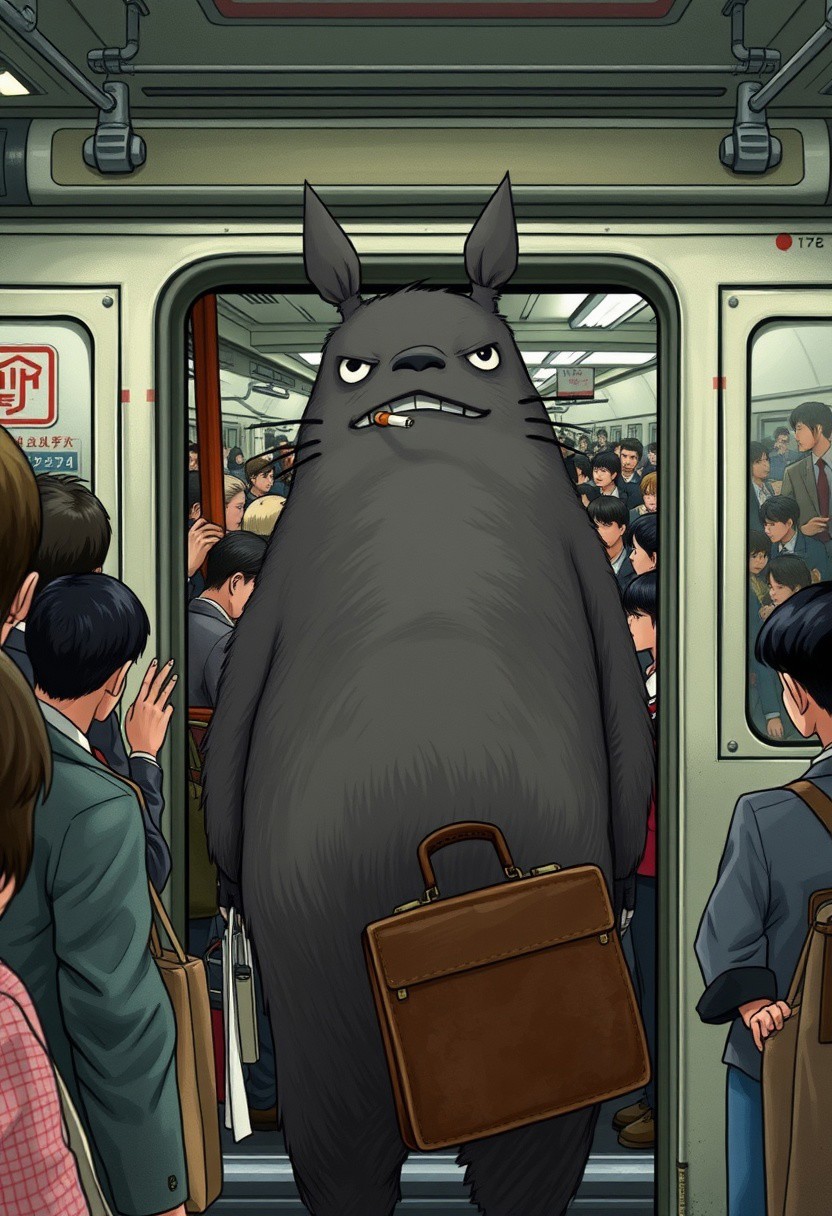"From the bustling platform of a Tokyo Metro station, a weary Totoro is visible through the open doors of an overcrowded train, facing outward. His fur is slightly matted and sagging from exhaustion, an unlit cigarette dangling loosely from his mouth, its tip faintly stained from being chewed. He wears a disheveled Japanese salaryman suit—dark blue fabric wrinkled, white shirt untucked and crumpled, tie hanging crooked with a missing jacket button. His large, clawed paws clutch a scuffed leather briefcase, worn from years of use. Inside the train, passengers are jammed together—salarymen in stiff suits, students in crisp uniforms, and office workers gripping straps or phones—pressed shoulder- to- shoulder under harsh fluorescent lights. The air hums with muffled chatter and the distant screech of rails. Outside, a chaotic crowd of commuters surges toward the open doors, elbows jostling and briefcases swinging as they try to squeeze into the already packed carriage. A few platform onlookers—a young woman with wide eyes, an elderly man with a furrowed brow, and a child pointing excitedly—stare at Totoro in surprise, their faces caught in the station’s dim glow. Beyond the train, the station’s tiled walls are plastered with colorful ads, and a digital clock overhead ticks forward, while the distant rumble of another train echoes through the underground
